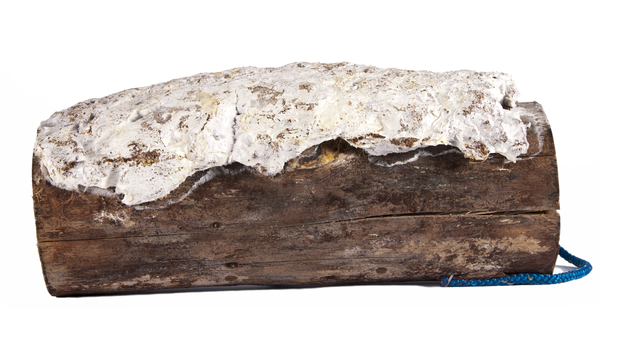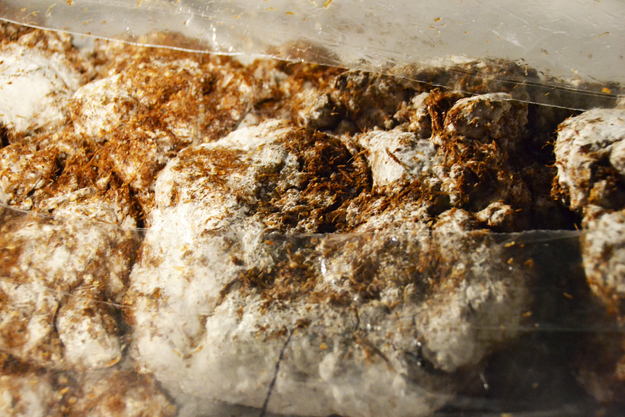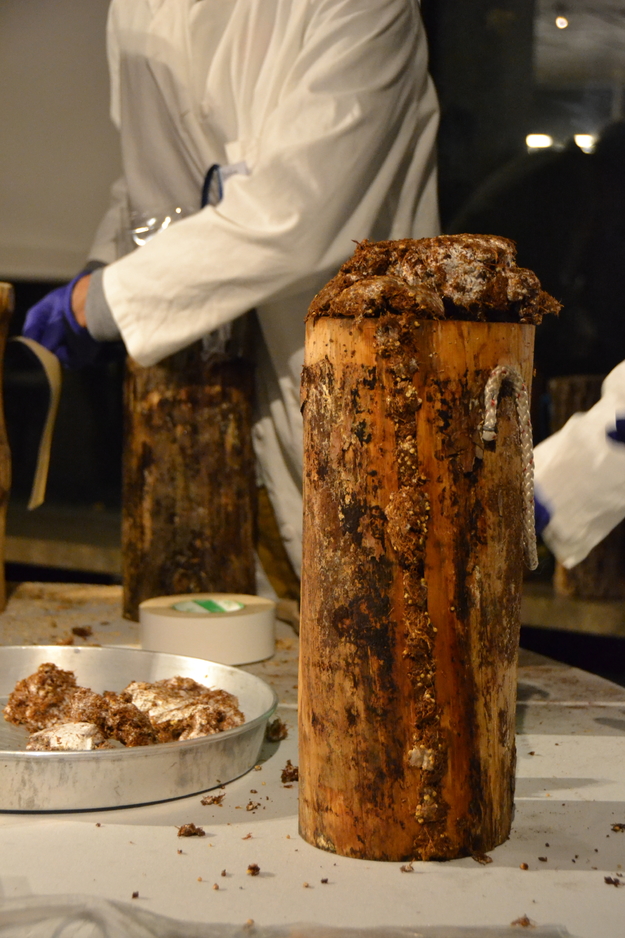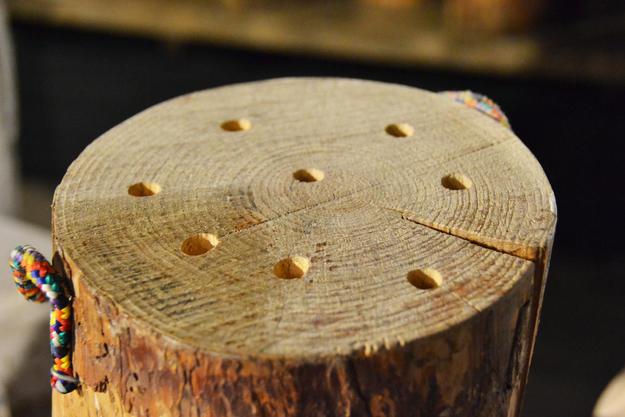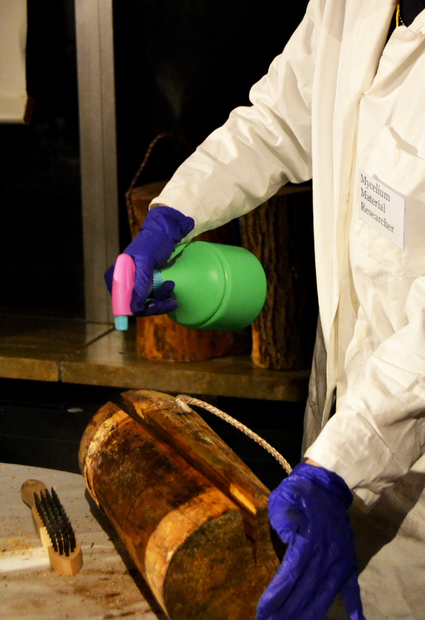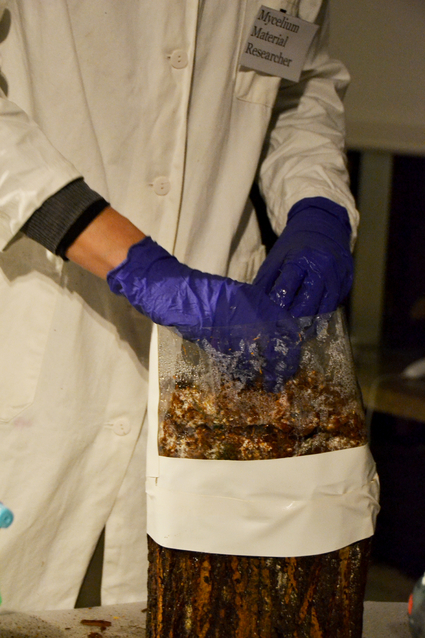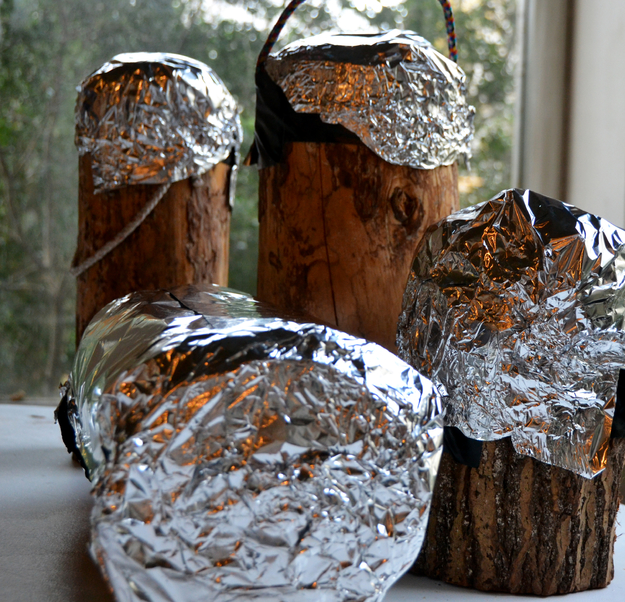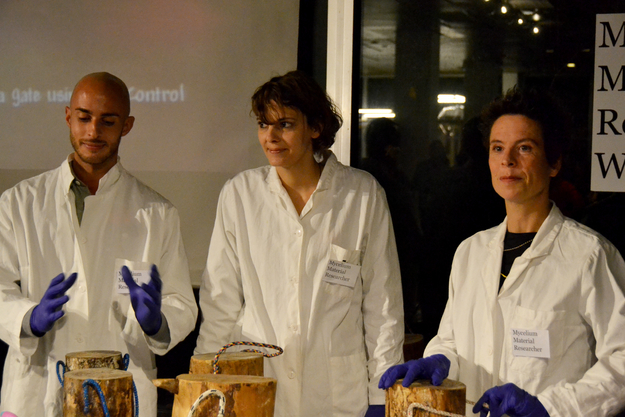What is this material?
This is a material developed by Ecovative, a sustainable materials design company that works with mycelium to develop alternatives to plastic. Currently focused on creating packaging and insulation, they are also constantly experimenting with new uses for this material. The material is made from different kinds of agricultural crop waste, such as cotton husks, hemp, etc., bonded together with mushroom “roots” (called mycelium). The material is totally renewable and home compostable. The researchers at Ecovative tested over 400 different varieties of fungus in order to figure out which mycelium is most suitable to different material applications. The material that we received has not been commercially released yet, and we have been given the exciting task of working with it as part of the Paddestoelen Paradijs exhibition and the Mycelium Rising project.
What are we doing?
We are experimenting with the material properties of this new myco-material with a project that we began on the night of the opening for the exhibition. There were little wooden log stools sitting around the exhibition space that were not very comfy to sit on. So we decided to try and make little 'mycelium pillows' that would hopefully grow into the top of the logs and provide comfy cushions for our visitors.
What is the process?
First, we scraped the tops of the logs with wire brushes to create a good surface for the myco-material to adhere to. We also experimented with drilling holes into the tops of the logs and packing myco-material into the holes to see if this would create a stronger bond to the log.
Second, we sprayed the surface where the myco-material would be applied with water. The water stops the material from drying out while it's growing and helps with the growth of the mycelium into the top of the logs.
Third, we wrapped PVC plastic around the tops of the logs where the material would be applied. The plastic creates a 'mold' of sorts, holding the myco-material and keeping it moist while it grows.
Fourth, we packed the myco-material on top of the logs, sprayed it with water, and covered the top with cellophane.
What were the results?
We waited 7 days for the mycelium to grow throughout the substrate. In our first attempt, the mycelium only grew evenly through one of the logs, while the rest only had some small patches of mycelium growth. We took the logs that weren't growing so well, uncovered them, sprayed the myco-material with water to re-stimulate the growth of mycelium and covered them again in the hopes of more mycelium growth. We also covered the myco-material with aluminum foil to prevent too much light. Darkness also helps to stimulate and speed up the growth of the mycelium.
While waiting for the other logs to grow more mycelium, we baked our first log in the oven to stop the mycelium growth and prevent any future contamination from other bacteria. We baked the log with the attached myco-material for one hour at 90 degrees celcius.
One of the myco material logs in the oven - Part of the Mycological Material Research artwork.
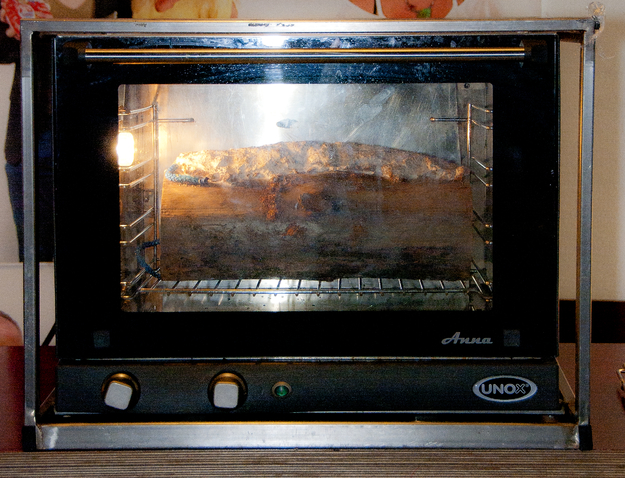
Who is working on this?
Three artists and designers who have a background and a special interest working with mycological materials took part in this first experimental workshop. The researchers involved are Maurizio Montalti, Sonja Bäumel, and Cocky Eek.
